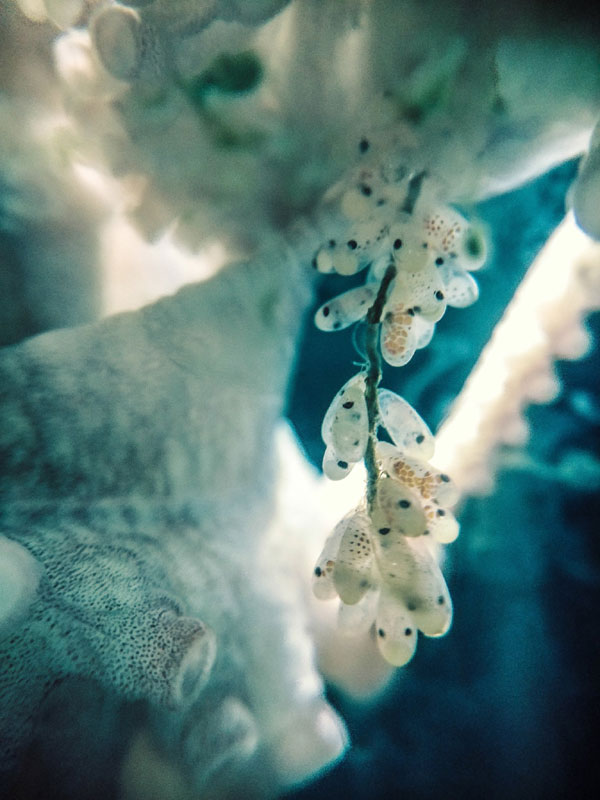Weird World of Oregon Coast Ocean Larvae Featured in Newport Event
Published 02/05/22 at 6:13 PM PST
By Oregon Coast Beach Connection staff

Includes exclusive listings; some specials in winter
In Cannon Beach:
Includes rentals not listed anywhere else
In Manzanita, Wheeler, Rockaway Beach:
Some specials for winter
In Pacific City, Oceanside:
Some specials for winter
In Lincoln City:
Some specials for winter
In Depoe Bay, Gleneden Beach:
Some specials for winter
In Newport:
Look for some specials
In Waldport
Some specials for winter
In Yachats, Florence
Some specials for winter
Southern Oregon Coast Hotels / Lodgings
Reedsport to Brookings, places to stay; winter deals
(Newport, Oregon) – From the world of creepy Sci-Fi to the real world, here come the larvae of the Oregon coast. Those tiny, see-through critters are the basis of much of the sea life off these shores, and they'll soon be explained in engaging detail by the Hatfield Marine Science Center in Newport. (Photo above: plankton, courtesy Hatfield Marine Science Center)
This month's science talk from the center is entitled "Peering into the World of Larval Fishes – Tools and Tales." The guest speaker is marine ecologist Su Sponaugle. She is a professor in the Department of Integrative Biology at Oregon State University, and she co-leads the Plankton Ecology Lab at Hatfield Marine Science Center.
It's part of the Science on Tap program: the talk is Tuesday, February 15 at 6 p.m.
The majority of marine fishes of the Oregon coast start their lives as tiny larvae, spending their time floating around the open ocean. This early life stage is particularly important because small changes in the survival of larval fishes can lead to large fluctuations in adult populations. Sponaugle will tell five "fish tales" about the challenges of finding and studying these tiny, transparent larvae and the unique research tools created for this work.
The public is welcome to attend this free online talk.
The Zoom webinar link is here. Or call: US: +1 971 247 1195 or +1 253 215 8782 or +1 301 715 8592. The webinar ID is: 959 8417 4316.
If you have any questions, contact the event organizer, Cinamon Moffett, HMSC Research Program Manager, at cinamon.moffett@oregonstate.edu or 541-867-0126.
Your Friendly Local Octopus Was a Larva

Photo here and below courtesy Seaside Aquarium
While it's unknown exactly what Sponaugle's talk will delve into, one example of a larval situation from the Oregon coast is your friendly local octopus.
These photos are from Seaside Aquarium, showing its octopus one year and its myriad of babies.
Back in 2017, their female Octopus rubescens started laying eggs on the display glass in May of that year. A couple of months later, on July 18, they began to hatch, creating a host of larvae in the Seaside Aquarium's tank. They released them into the ocean the following day.
It was some 75 days before the larvae hatched, and Tiffany Boothe of the aquarium said they “were so adorable it was hard to let them go.”

Females octopuses lay their eggs in a long string, called a festoon,” Boothe said. “Each egg attached to the festoon is about the size of a grain of rice. The larger the female the longer her festoons will be. It takes about six to eight weeks, depending on water temperature, for the eggs to hatch. The cooler the water the slower they develop.”
The newly-hatched octopus larvae drift like plankton for the next few weeks. For the first few days, however, they're still getting nutrition from their yolk sack. After that, however, it's time to start eating real food, and they start feeding on crab zoea (basically really young baby crabs).

“This is a perilous time for the larvae, most will get eaten up by small fish as they drift,” Boothe said. “Those that survive will go through a slight physical change which will alter their appearance making them resemble an adult, just smaller, and settle to the bottom of the sea floor.”
Oregon Coast Hotels in this area - South Coast Hotels - Where to eat - Maps - Virtual Tours
Cannon Beach Lodging
Nehalem Bay Lodgings
Manzanita Hotels, Lodging
Three Capes Lodging
Pacific City Hotels, Lodging
Lincoln City Lodging
Depoe Bay Lodging
Newport Lodging
Waldport Lodging
Yachats Lodging
Oregon Coast Vacation Rentals
Oregon Coast Lodging Specials

Courtesy Seaside Aquarium: anenome larva inside a jellyfish
More About Oregon Coast hotels, lodging.....
More About Oregon Coast Restaurants, Dining.....
LATEST Related Oregon Coast Articles
A curious weather phenomenon that happens more out here
Curb, Road Construction Resumes in Lincoln City as Oregon Coast Season Begins...
Crews return Sept 15 with some dust and small delays. Traffi
NASA Announces First Evidence of Life on Mars in Possible Biosignature
In a former riverbed billions of years old, they found spots with interesting compounds. Astronomy
Portland, Oregon - Beaverton, Oregon Weather and Alerts | Current Conditions,...
Current weather conditions and alerts for Portland and Beaverton
Oregon Coast Scenic Railroad's Fame Engine Turns 100 Years Old with Special Runs
Sept 20 and 21 various special rides. Garibaldi events, Rockaway Beach events, Wheeler events
South Oregon Coast Goes Interstellar: Coos Bay's Sunset Bay Astronomy Fest Se...
Shore Acres State Park gets spacey. Coos Bay events
Swarm of 12 Quakes Fire Off 100 Miles from South Oregon Coast
After the initial 5.8, ranging in magnitude from 2.7 to 5.1: Coos Bay, Port Orford, Bandon, Gold Beach. Geology, weather
SOLVE Cleanup Happens Along Oregon Coast, Inland Sept 20 Through 28
SOLVE is inviting volunteers to take part. Brookings events, Gold Beach events, Port Orford events, Coos Bay events, Bandon events, Florence events, Yachats events, Newport events, Lincoln City events, Rockaway Beach events, Manzanita events, Cannon Beach events, Seaside events, Astoria events
Back to Oregon Coast
Contact Advertise on BeachConnection.net
All Content, unless otherwise attributed, copyright BeachConnection.net Unauthorized use or publication is not permitted



















































